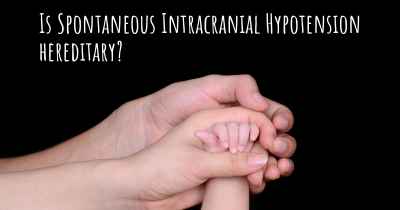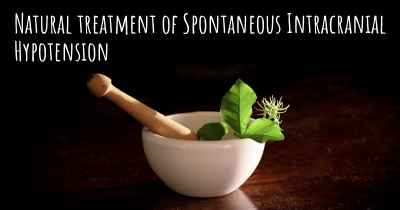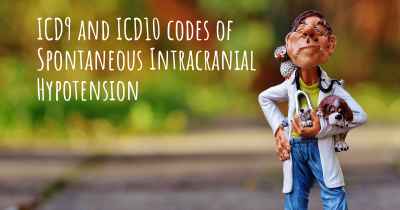Living with Spontaneous Intracranial Hypotension. How to live with Spontaneous Intracranial Hypotension?
Can you be happy living with Spontaneous Intracranial Hypotension? What do you have to do to be happy with Spontaneous Intracranial Hypotension? Living with Spontaneous Intracranial Hypotension can be difficult, but you have to fight to try to be happy. Have a look at things that other people have done to be happy with Spontaneous Intracranial Hypotension

Living with Spontaneous Intracranial Hypotension
Spontaneous Intracranial Hypotension (SIH) is a rare condition characterized by low cerebrospinal fluid (CSF) pressure, resulting in various symptoms such as severe headaches, neck pain, and cognitive difficulties. While living with SIH can be challenging, there are strategies and lifestyle adjustments that can help manage the condition and improve quality of life.
1. Seek Medical Guidance
Upon diagnosis, it is crucial to establish a strong partnership with a knowledgeable healthcare professional, preferably a neurologist or neurosurgeon experienced in SIH. They can guide you through treatment options, provide necessary medications, and monitor your condition regularly.
2. Understand Your Condition
Educate yourself about SIH to better comprehend its causes, symptoms, and potential complications. This knowledge will empower you to make informed decisions about your treatment and lifestyle adjustments.
3. Medications and Treatments
Depending on the severity of your symptoms, your healthcare provider may prescribe medications such as pain relievers, caffeine, or specific drugs to increase CSF production. In some cases, targeted injections or surgery may be necessary to repair CSF leaks causing the hypotension.
4. Manage Headaches
Headaches are a common symptom of SIH and can significantly impact daily life. To manage them:
- Stay Hydrated: Drink plenty of fluids to maintain proper hydration.
- Avoid Triggers: Identify and avoid triggers that worsen your headaches, such as certain foods, bright lights, or loud noises.
- Practice Relaxation Techniques: Engage in activities like deep breathing, meditation, or yoga to reduce stress and alleviate headaches.
5. Modify Physical Activities
Engaging in physical activities can be challenging with SIH, but it is essential to find a balance that suits your condition. Consider the following:
- Low-Impact Exercises: Opt for activities that are gentle on the body, such as walking, swimming, or tai chi.
- Modify Intensity: Adjust the intensity and duration of your workouts to avoid excessive strain.
- Listen to Your Body: Pay attention to any warning signs or symptoms during physical activity and adjust accordingly.
6. Prioritize Rest and Sleep
Getting sufficient rest and quality sleep is crucial for managing SIH symptoms. Consider the following tips:
- Create a Sleep Routine: Establish a consistent sleep schedule and create a relaxing bedtime routine.
- Optimize Sleep Environment: Ensure your bedroom is dark, quiet, and comfortable to promote better sleep.
- Use Supportive Pillows: Experiment with different pillow types to find the most comfortable position for your head and neck.
7. Emotional Support
Living with a chronic condition like SIH can be emotionally challenging. Seek support from loved ones, join support groups, or consider therapy to help cope with the emotional impact of the condition.
8. Stay Positive and Adapt
While SIH may present ongoing challenges, maintaining a positive mindset and adapting to the condition can make a significant difference. Focus on what you can control, set realistic goals, and celebrate small victories along the way.
Remember, every individual's experience with SIH is unique, so it's important to work closely with your healthcare provider to develop a personalized management plan. By implementing these strategies and making necessary lifestyle adjustments, you can improve your overall well-being and effectively live with Spontaneous Intracranial Hypotension.








